What do pilots do when we aren’t mustering?
Host: Fortescue Helicopters
Written by Weldon Percy – Owner and Chief Pilot, Fortescue Helicopters.
I often find that I get asked what we do outside of mustering season, some people asking as if they think we can’t or wouldn’t do anything else. Well, really the only answer to the question, “what do we do” is – anything and everything!
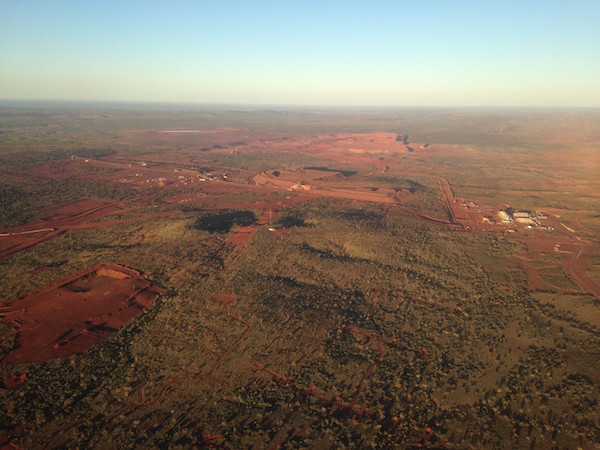 Hope Downs Four mine: a joint venture between Rio Tinto and Hancock Prospecting. This mine was non-existent, just spinifex hills five years ago when I came to the Pilbara and is now fully operational complete with its own railway. Photo: Weldon Percy.
Hope Downs Four mine: a joint venture between Rio Tinto and Hancock Prospecting. This mine was non-existent, just spinifex hills five years ago when I came to the Pilbara and is now fully operational complete with its own railway. Photo: Weldon Percy.
In the aerial mustering industry in northern Australia we are lucky that our quiet time of year coincides with Christmas and New Year when most people are having their holidays. This is good as we quite often have a lot of flexibility at this time of year to go away whenever our partners/better halves are free to do the same and we can make time to rest if we want to on rainy days and enjoy watching clouds roll in while having a cold one.
At Fortescue Helicopters as our workload is normally reduced to just requiring one – two pilots through the wet most of our staff go away back to wherever they come from or find other employment through the wet season to keep income rolling in, this is the same with most aerial mustering companies I know of.
 The Robinson R66 helicopter I occasionally fly for another company and sometime use for Fortescue Helicopters. Photo: Weldon Percy.
The Robinson R66 helicopter I occasionally fly for another company and sometime use for Fortescue Helicopters. Photo: Weldon Percy.
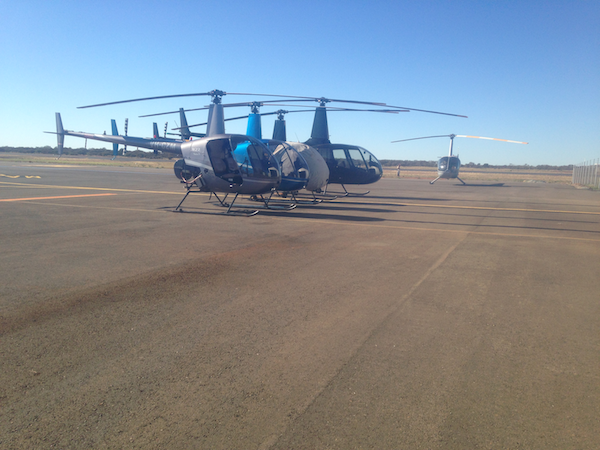 Some of our fleet at the Hangar.
Some of our fleet at the Hangar.
Although the general economy in WA has slowed down we still have quite an active mining sector in the Pilbara, who require helicopters for a wide range of work in the wet, especially if we have a cyclone or major weather event. This can mean anything from flying staff to and from remote camp sites to lifting equipment with a long line underneath the helicopter and almost anything in between. In cooperation with another company we use R44 and R66 type helicopters for this type of work generally, with some jobs being able to be handled with the R22.
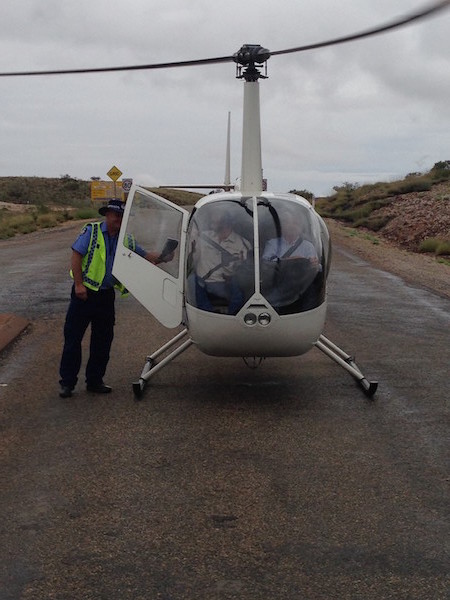 Getting pulled over for a RBT check in the wet season. Due to flooded roads this policeman hadn’t seen a vehicle in town for so long he jumped at the opportunity to breath test anyone he could in whatever vehicle they had. Photo: Courtesy of Nullagine Police.
Getting pulled over for a RBT check in the wet season. Due to flooded roads this policeman hadn’t seen a vehicle in town for so long he jumped at the opportunity to breath test anyone he could in whatever vehicle they had. Photo: Courtesy of Nullagine Police.
Some years in the past this type of work has kept me busy as a contract pilot flying almost every day throughout the summer as well as mustering season, but in the 2014/2015 wet there wasn’t as much as in the past, but it still kept me busy on average a couple days each week.
After spending Christmas at home in Newman and New Years with some friends down near Perth, I also found the time over the last wet to go back to school, well sort of. I decided due to some changes in the CASA rules that it would be useful for me to get an “instructor rating” added to my helicopter pilot’s license. In the future it will make it easier for me to train new staff and be able to conduct checks for other pilots. It’s becoming hard to source good instructors with experience in the risks associated with aerial mustering so thought I might be able to help out a few other pilots in the future as well.
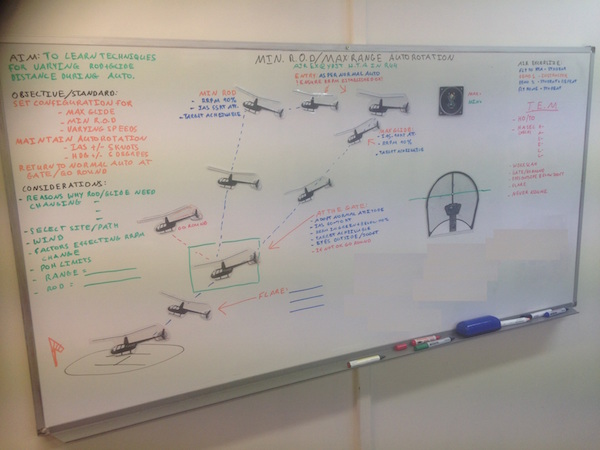 Some of the class room work I had to do create for ‘Imaginary students’ as part of my Instructor rating. Photo: Weldon Percy.
Some of the class room work I had to do create for ‘Imaginary students’ as part of my Instructor rating. Photo: Weldon Percy.
So in February after two weeks of being “back at school” I sat a written and flying test and was granted an instructor’s rating. Spending time flying around in the metropolis of Perth sure made me appreciate how much I really love flying in the bush and working with cattle, I couldn’t wait to get home most of the time I was there. But there aren’t any girls in bikinis on beaches in the bush, so I didn’t mind looking at them while I was flying around down there!
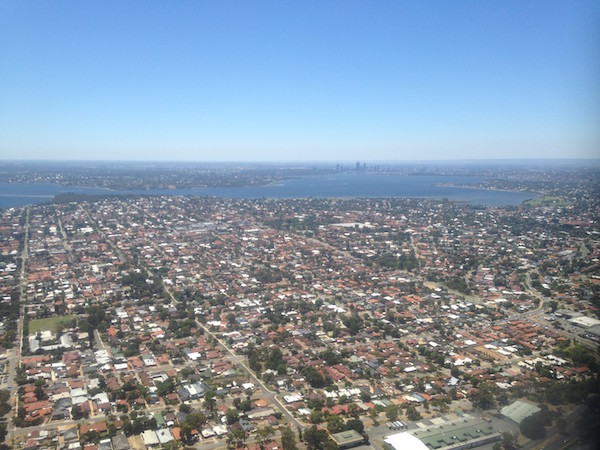 Perth and the Swan River. Photo: Weldon Percy
Perth and the Swan River. Photo: Weldon Percy
